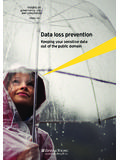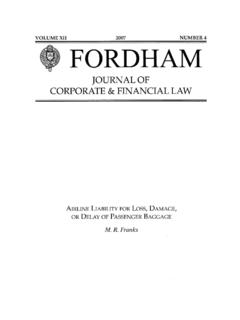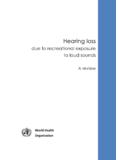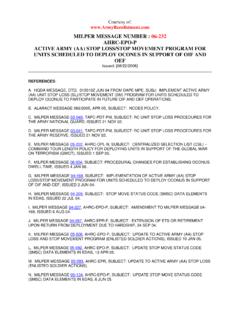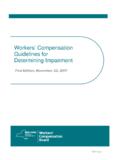Transcription of Global burden of hearing loss in the year 2000 - …
1 1 Global burden of Disease 2000 Global burden of hearing loss in the year 2000 Colin Mathers1, Andrew Smith2, Marisol Concha3 1. Introduction hearing impairment is the most frequent sensory deficit in human populations, affecting more than 250 million people in the world. Consequences of hearing impairment include inability to interpret speech sounds, often producing a reduced ability to communicate, delay in language acquisition, economic and educational disadvantage, social isolation and stigmatisation. It may be worsened by some medical conditions such as hypothyroidism, diabetes, and possibly hyperlipidemia, among others. Most congenital and childhood onset hearing loss is included as sequelae to various disease and injury causes already included in the Global burden of Disease Study.
2 Examples include otitis media, memingitis, rubella, congenital anomalies and non-syndromal inherited hearing loss . Adult-onset hearing loss was not separately analysed in the original Global burden of Disease for 1990 (1). The leading causes of adult-onset hearing loss are presbycusis (age related hearing loss ) followed by noise-induced hearing loss . This paper reviews Global data on hearing loss among children and among adults, and estimates the Global burden of adult-onset hearing loss . In addition, it provides estimates of the prevalence of hearing loss among children and adults at various levels of severity. In the Version 1 estimates for the Global burden of Disease 2000 study, published in the World Health Report 2001 (2), adult-onset hearing loss was the 2nd leading cause of YLDs at Global level, accounting for of total Global YLDs.
3 This paper summarises the data and methods used to produce the Version 3 estimates of adult-onset hearing loss burden for the year 2000, as published in the World Health Report 2003. 2. Case and sequelae definitions There is a diversity of definitions of hearing impairment, thus, comparison among studies is difficult. We use WHO classification that classified hearing impairment according to the pure tone average in the better hearing ear. Categories of hearing impairment ranges from no impairment to profound impairment according the threshold level. The hearing threshold level, using audiometry, is to be taken as the better ear average for four frequencies , 1, 2, and 4 kHz. (3) The different grades of hearing impairment and their impact in performance are presented in Table Duivestijn (4) discusses the effect of different definitions on measured prevalence of hearing loss .
4 1 Epidemiology and burden of Disease, WHO Geneva (GPE/EBD) 2 Prevention of Blindness and Deafness (MNC/PBD), WHO Geneva 3 Ministry of Health, Chile 2 Global burden of Disease 2000 Table summarizes the GBD 2000 case and sequelae definitions for adult-onset hearing loss . For the GBD 2000, the burden of adult-onset hearing loss has been estimated for moderate or greater hearing impairment. While the prevalence of slight impairment (26-40dBHL) has also been estimated, it has been assumed to have negligible disability weight and not to contribute to the YLD for hearing loss . Table WHO grades of hearing impairment Grade of Impairment Audiometric ISO value (average of 500, 1000, 2000, 4000 Hz) Impairment description 0 (no impairment) 25 dBHL or less (better ear) No or very slight hearing problems.
5 Able to hear whispers 1 (Slight impairment) 26-40 dBHL (better ear) Able to hear and repeat words spoken in normal voice at 1 metre 2 (Moderate impairment) 41-60 dBHL (better ear) Able to hear and repeat words using raised voice at 1 metre 3 (severe impairment) 61-80 dBHL (better ear) Able to hear some words when shouted into better ear 4 (Profound impairment including deafness) 81 dBHL or greater (better ear) Unable to hear and understand even a shouted voice Source: (3) Table GBD 2000 case and severity-level definitions for adult-onset hearing loss Cause category GBD 2000 Code ICD 9 codes ICD 10 codes Adult-onset hearing loss U102 389 H90-H91 Severity level Definition hearing loss , adult onset Cases of adult onset hearing loss due to ageing or noise exposure.
6 Excludes hearing loss due to congenital causes, infectious diseases, other diseases or injury. Moderate hearing loss hearing threshold level in the better ear is 41-60 dBHTL (averaged over , 1, 2, 4kHz). (Not able to hear and repeat words spoken in normal voice at 1 metre). Person may or may not use a hearing aid Severe hearing loss hearing threshold level in the better ear is 61-80 dBHTL (averaged over , 1, 2, 4kHz). (Not able to hear and repeat words using raised voice at 1 metre). Person may or may not use a hearing aid Profound hearing loss hearing threshold level in the better ear is 81 dBHTL or more (averaged over , 1, 2, 4kHz). (Not able to hear words when shouted into better ear). Person may or may not use a hearing aid 3.
7 Population prevalence and incidence studies In spite of the number of published studies about hearing impairment (HI), the currently available data is mostly incomplete and use different criteria, which causes difficulties in comparison and estimation of the problem. Also, only relatively few studies have been carried out to date in representative population samples. Table shows the prevalence of hearing impairment measured 3 Global burden of Disease 2000 by pure tone audiometry in countries with available information. Population-based surveys conducted in several developing countries have used the protocols developed by WHO to identify causes of HI and prevalence. Available data on hearing loss prevalence in children are summarized in Table 4 Global burden of Disease 2000 Table Prevalence studies for hearing impairment: adults Country Study population Ref.
8 Years Definition used Sample size Age range Prevalences available by UK Four cities (5,6) 1980-86 25+, 45+, 65+ dBHL in better ear 2,910 17-80 Age, sex Italy Milan, Padua, Florence, Bari, Palermo (7) 1989 25+, 45+, 65+, 90+ dBHL in the better ear 2,170 18+ Age Denmark Copenhagen - males (8) 1976 25+dBHL in better ear ,1,2,4) 300 49-69 Age Denmark Jutland (rural) (9) Early 1990s 25+ dBHL 35+ dBHL 45+ dBHL, 1,397 31-50 Age x sex Finland Northern Ostrobothnia (10) 1997 21+, 40+, 70+, 95+ dBHL in the better ear ( ,1,2,4) 5,400 5-75 Age USA Framingham (11) 1979 25+ dBHL ( ,1,2,4 kHz) in better ear 2,293 57-89 USA Beaver Dam, Wisconsin (12-14) 1993-95 26+, 41+, >60 in WORSE ear ( ,1,2,4 kHz ) >25 dBHL in better ear ( ,1,2,4) 3,753 48-92 Age x sex (26+ only) USA Beaver Dam, Wisconsin (15-16) 1987-88 26+, 41+, >60 in WORSE ear ( ,1,2,4 kHz ) 48-92 USA NHANES 1 national (17-18) 1971-75 25+ dBHL in the better ear (HFPTA scale 1,2,4 kHz) 2,506 55-74 Age x sex USA HHANES Hispanic Americans (19) 1982-84 26+, 41+ in WORSE ear ( ,1,2 kHz ) 2,751 20-74 Age x sex Brazil Residents of the city of Canoas, RS, Brazil (20) 2003 26+,41+, 61+, 81+ dBHL or, better ear 3,858 All ages Age, sex Australia South Australia (21) 1996?
9 25+, 35+, 45+, 65+ dBHL in better ear ,1,2,4) 9,027 15+ Age x sex Oman National (22) 1996-97 26+, 41+ dBHL (1,2,3 kHz bilateral/better ear) 11,402 All ages Age India Vellore, Taluk, Tamil Nadu (23-24) 1997-98 26+,41+, 61+, 81+ dBHL or, better ear 5,432 All ages Age India Lucknow rural (25) 1975-76 15+, 30+, 60+ dBHL, bilateral deafness and unilateral deafness 904 All ages Age x sex (15+) Age (30+,60+) India Lucknow urban (26) 1970 15+, 30+, 60+ dBHL, bilateral deafness and unilateral deafness 904 All ages Age x sex (15+) Age (30+,60+) Sri Lanka Kandy district (23-24) 1998-2000? 27+, 41+, 61+ 81+ dBHL, better ear (1,2,4 kHz bilateral/better ear) 4,858 All ages Age (41+ only) 5 Global burden of Disease 2000 Nepal Two regions (27) 1990?
10 31, 51+, 81+ dBHL, better ear (1,2,4 kHz bilateral/better ear) 15,845 5+ years Age China Sichuan (28-29) 1986-87 27+, 56+, 91+ dBHL, better ear 126,876 All ages Age, sex (27+ only) Korea Community-based and health clinics (30) 1994-97 27+, 41+, 56+, 71+ dBHL, both ears; presbycusis only 39,004 25+ Age x sex Age (56, 71) 6 Global burden of Disease 2000 Table (continued). Prevalence studies for hearing impairment: adults Thailand 17 provinces (31) 1988-90 41 dBHL, better ear 7,499 All ages Thailand Bangkok + 5 provinces (31) 1986-87 41+, 61+, 81+ dBHL, better ear ( , 1, 2 kHz bilateral/better ear) 1,797 All ages Total only Indonesia Bandung municipality & district (23-24) 1997-98 26+, 41+, 61+ 81+ dBHL, (1,2,4 kHz bilateral/better ear) 5,604 All ages Age (41+ only) Myanmar Yangon (23-24) 1997-98 26+, 41+, 61+ 81+ dBHL, (1,2,4 kHz bilateral/better ear) 5,604 All ages Age (41+ only) Vietnam 6 selected provinces (3 north, 3 south) (32) 26+, 41+, 61+ 81+ dBHL, (1,2,4 kHz bilateral/better ear) 13,120 6 months and older Age x sex Nigeria 3 states.











